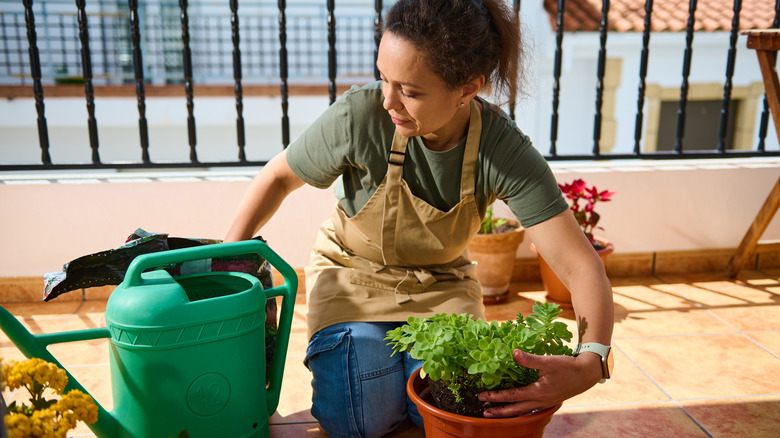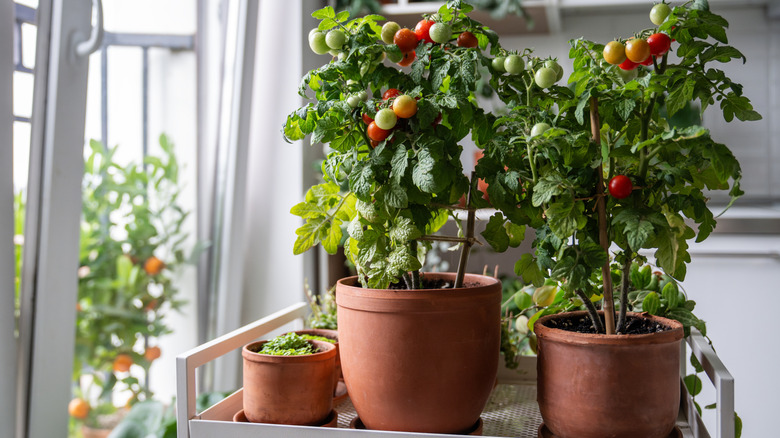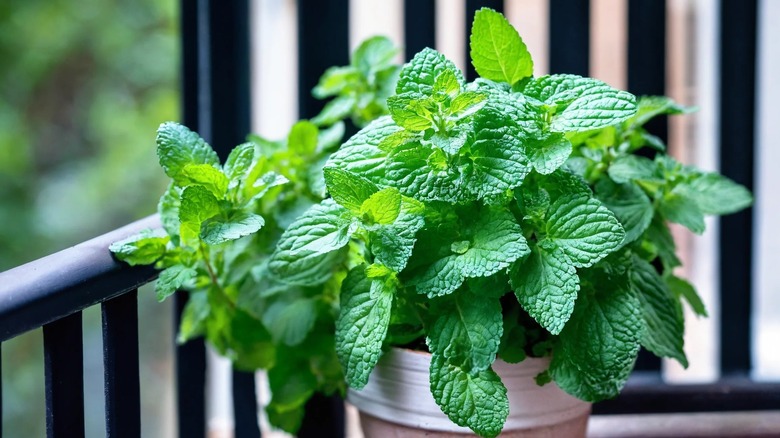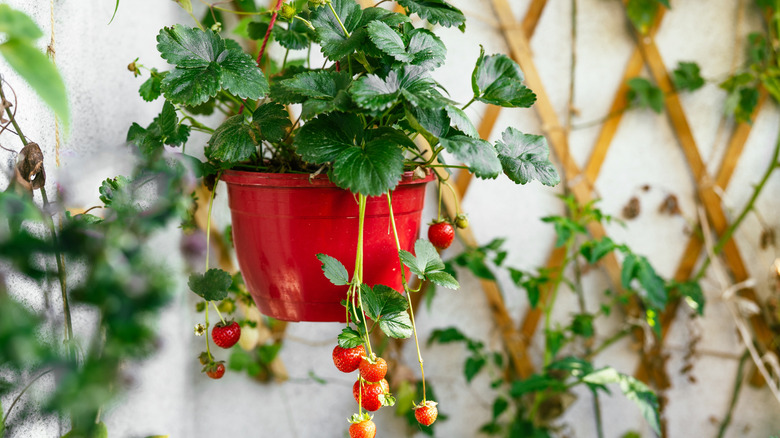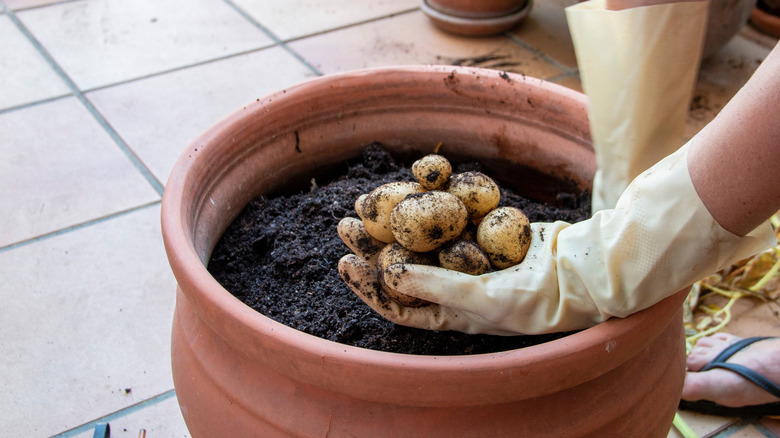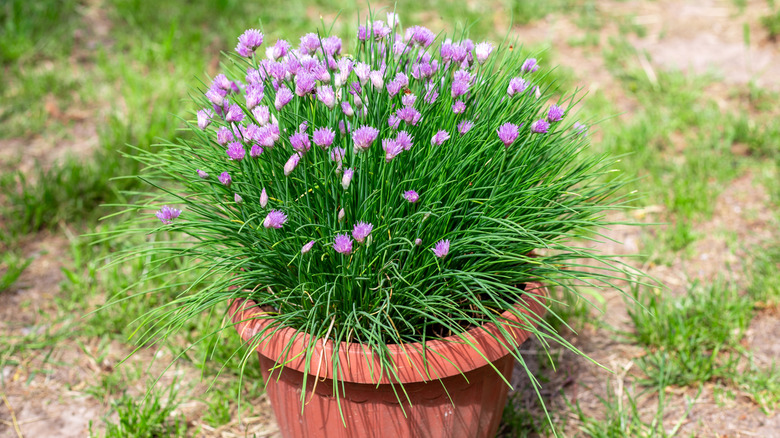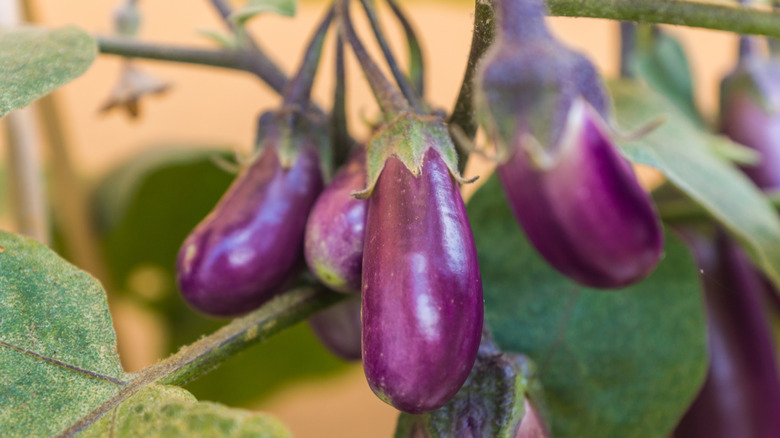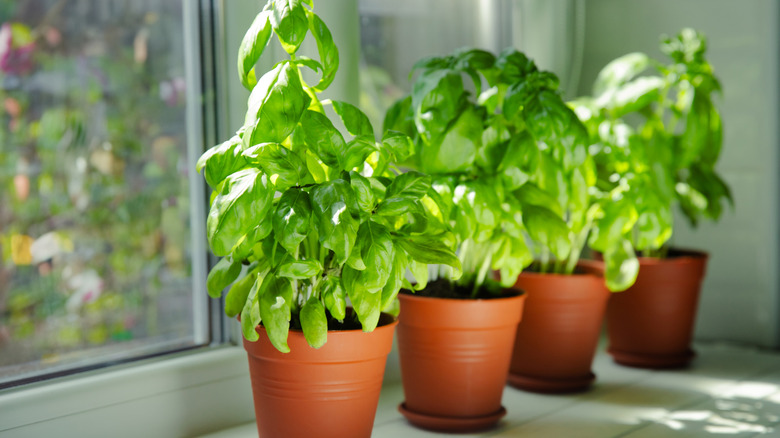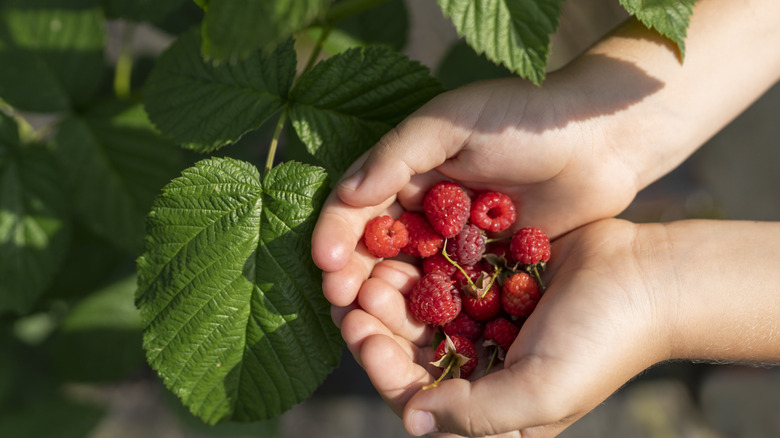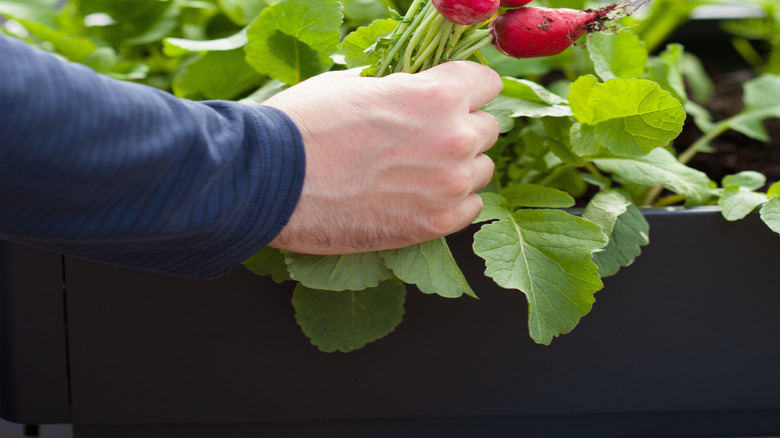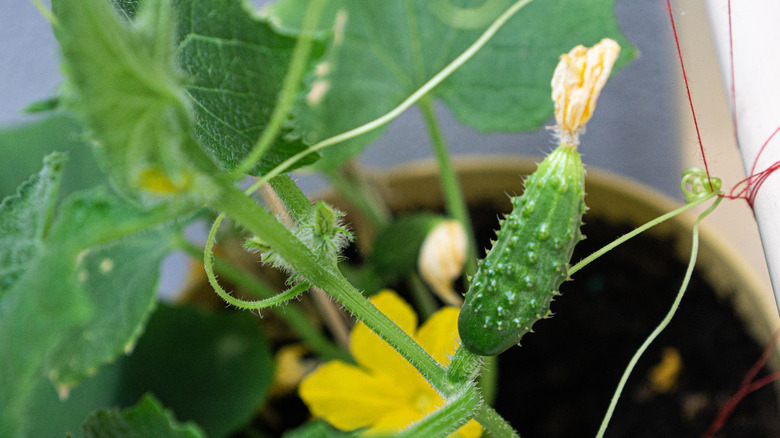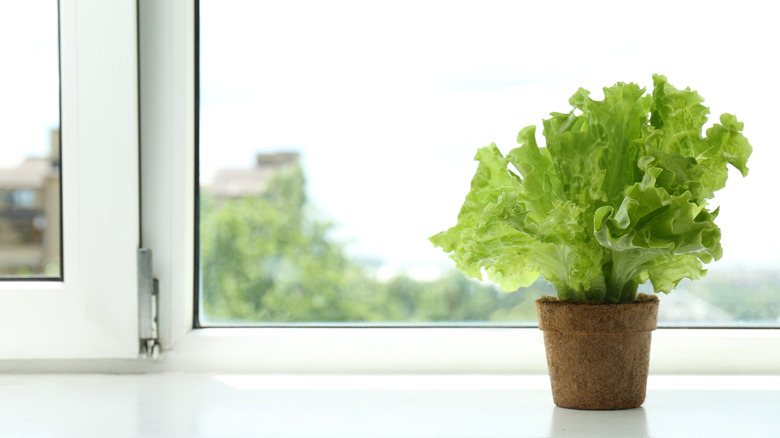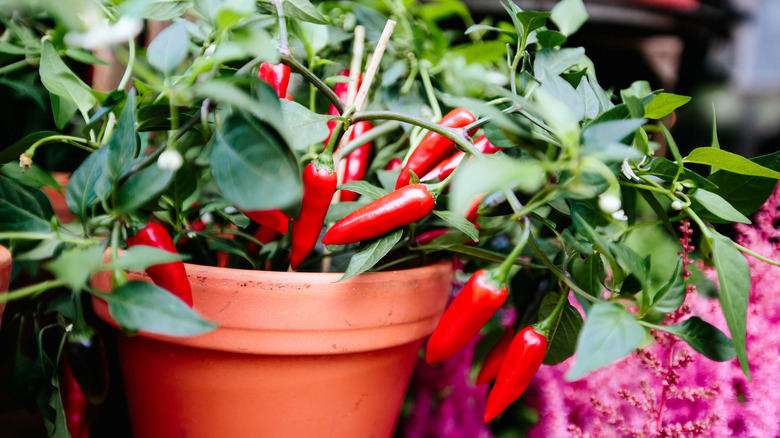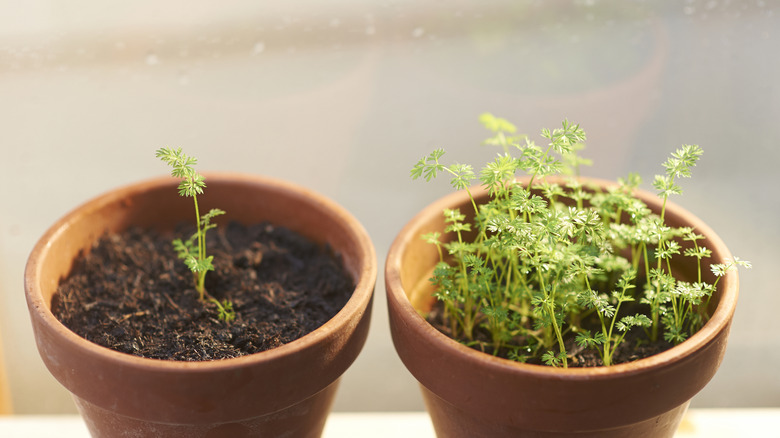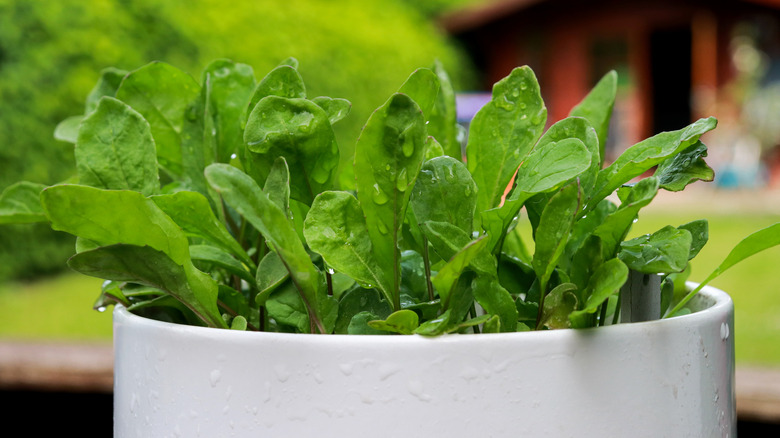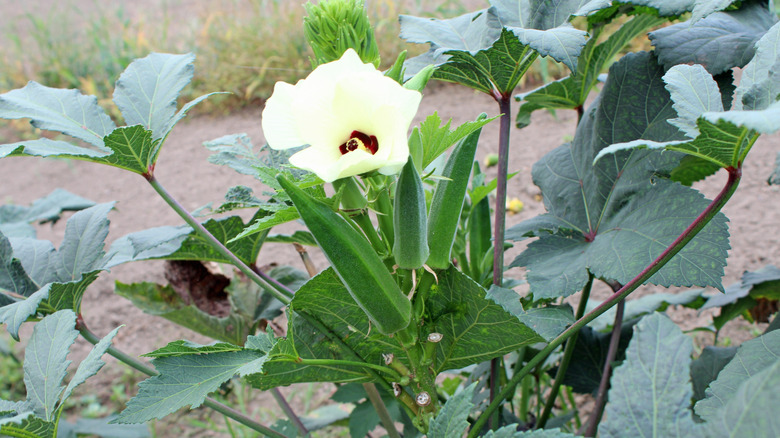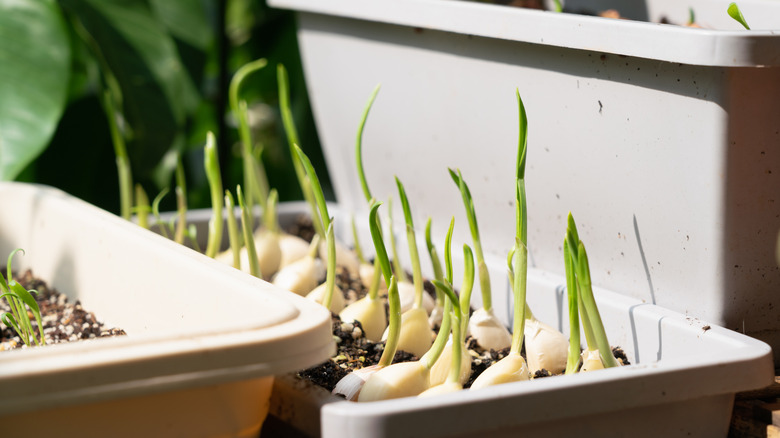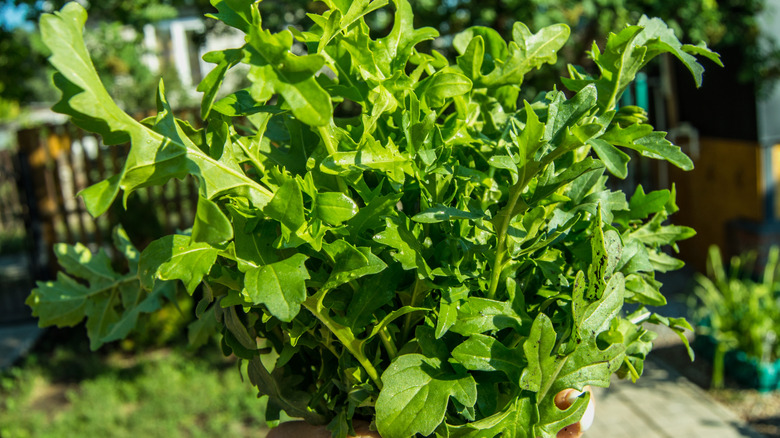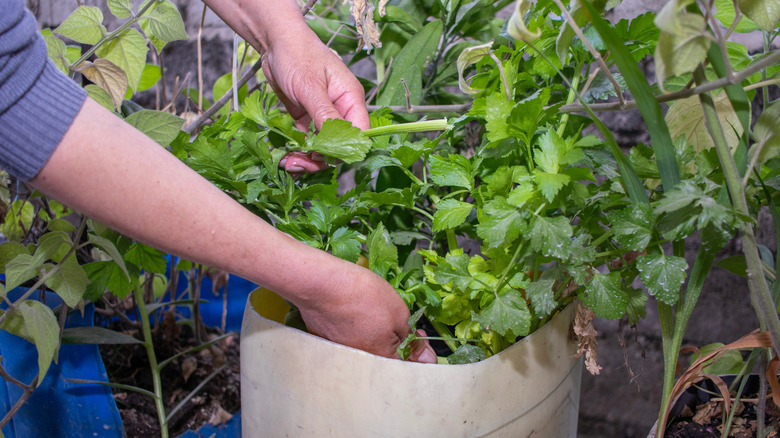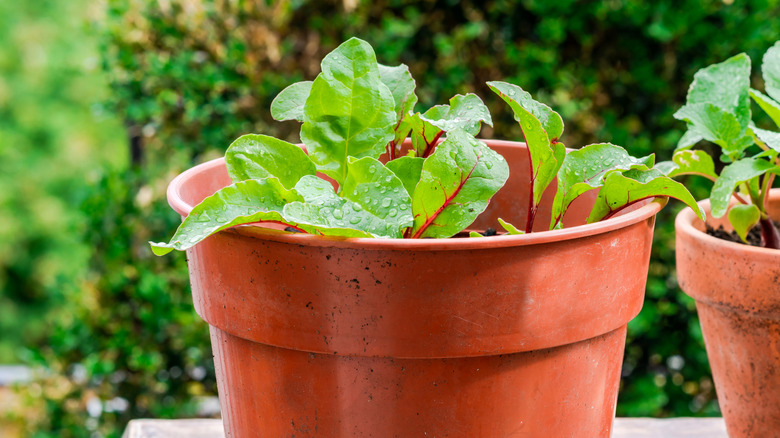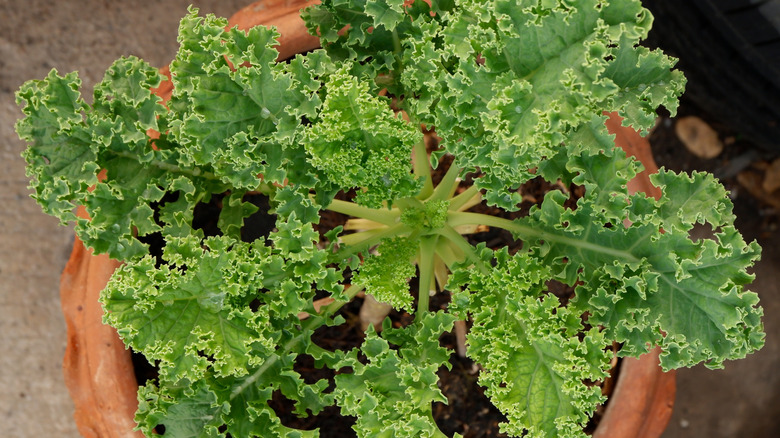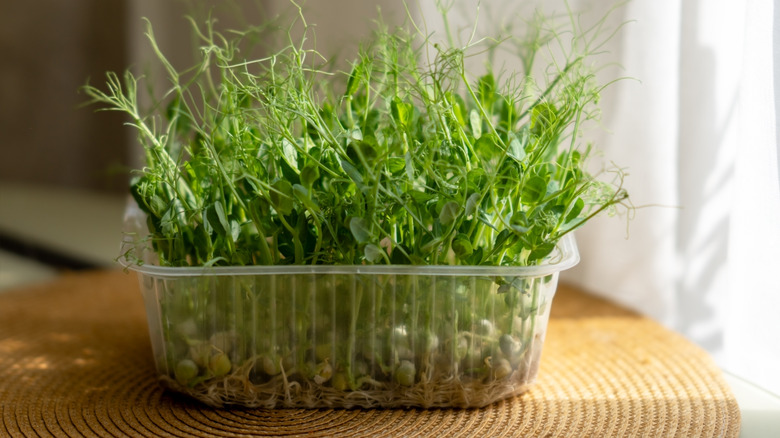22 Edible Plants Perfect For Growing Indoors And In Small Spaces
Growing your own edible garden can save you money during your trips to the grocery store and keep your pantry stocked with ingredients you trust from season to season. Not only is an at-home vegetable or herb garden practical and convenient, but it allows you to have a variety of fresh, nutrient-dense produce right at your fingertips, ready to be enjoyed. But not all of us have the yard space to nurture rows of bountiful garden beds or a stand-alone greenhouse. If you live in an apartment or a house with a small yard, growing your own food at home can feel like a near impossible task.
However, if you're pressed for square footage, you can still create a thriving edible garden in tight spaces like a balcony, a petite patio, or even a windowsill using urban gardening techniques. Methods like container gardening allow you to grow plants in hanging baskets, on shelves of pots, or even in mason jars, all without taking up valuable real estate. If you dig a little deeper, you will find there are plenty of clever gardening hacks for homes without a backyard and edible plant varieties that grow exceptionally well in compact growing conditions. Here are some of the best fruits, vegetables, and herbs for growing indoors or in small spaces, so you can have homegrown ingredients at your disposal all year long, regardless of how much yard space you have.
Tomatoes
Tomato (Solanum lycopersicum) plants are an incredibly versatile option for your compact garden and can easily grow both indoors and outdoors. The key to a flourishing tomato plant is choosing the right variety that's best suited to grow with minimal space. Smaller varieties like cherry tomatoes (Solanum lycopersicum 'Red Cherry') or Roma tomatoes (Solanum lycopersicum 'Roma') are ideal for growing in small pots on a balcony or in a well-lit windowsill in your kitchen. When choosing your tomato plant, however, try and pick a determinate variety which will stay the same size when mature, and won't outgrow your space.
Peppermint
Herbs like peppermint (Mentha × piperita) are another great option for tiny container gardens since they're manageable in size and can be frequently harvested and used in home cooking. Mint grows well in small pots, so you can easily move your peppermint plants around both inside and outside to ensure they're getting the three to four hours of direct sunlight that they need. Mint plants are flexible, fast growers that benefit from container environments since the compact space can help keep the plant's size under control. Even the smallest containers, like mason jars, can host a healthy peppermint plant.
Strawberries
Ripe, homegrown strawberries (Fragaria x ananassa) have a reputation for being smaller and sweeter than store-bought ones and can easily be grown in a hanging basket. Strawberry plants' compact root systems and low-maintenance nature make them the perfect match for people looking to grow their own fruit with minimal amounts of space. A hanging basket on a bright balcony or in a windowsill is the perfect home for a strawberry plant, since it's runners and fruit can eloquently spill over the edge while thriving in direct sunlight.
Potatoes
Potatoes (Solanum tuberosum) can also grow well in gardens with limited space if you choose the right variety. To successfully grow a potato plant indoors or on a balcony, you'll want to choose a small, micro tuber variety like fingerlings, Yukon golds, or red skinned potatoes. Potatoes do well when grown in bags that allow the potatoes to grow deep in nutrient-dense soil. You can fill a 10-liter container with loose soil and place your bag in direct sunlight. Potato plants can also be grown indoors year-round as long as they receive at least six hours of sun.
Chives
Chives (Allium schoenoprasum) are another aromatic herb that will thrive in your container garden. This flowering herb has an extremely compact root system and grows vertically out of pots, so it will take up minimal space and can bloom in containers that are mere inches wide. Chive plants are also considered to be rapid growers, so they can be frequently harvested and kept conveniently close by on a kitchen windowsill or sunny porch. With consistent watering, six hours of sunlight, and rich soil, you can snip chives for your home's pantry during any season without having to leave your kitchen.
Eggplants
Eggplants (Solanum melongena) are known for being productive and compact plants that can grow efficiently in container gardens. You can find smaller, dwarf varieties of the vegetable like fairy tale or patio baby eggplants that don't require ample amounts of space to flourish. Eggplants are a warm weather crop that thrives in the summer months, but with adequate amounts of heat, light, and attention, you can successfully grow smaller varieties of the nightshade indoors and can continue to reap its benefits when temperatures drop.
Basil
When searching for easygoing herbs to keep on hand in your kitchen, basil (Ocimum basilicum) is a superb contender. Basil is the plant that just keeps giving. You can pick and prune the basil plants living in your windowsill for home-cooked meals and watch the plant grow back stronger and more bountiful over time. Basil can grow successfully in direct sunlight both indoors and outdoors in pots filled with rich, well-draining soil. In general, basil does very well when grown in containers, but varieties like Thai, Genovese, or sweet basil are known to be particularly abundant.
Raspberries
What is better than a juicy, sweet raspberry (Rubus idaeus) grown right in your own home garden? Growing raspberries in a container garden is simple and straightforward. There are benefits to growing raspberries in pots instead of raised beds, like better soil drainage, extra protection from pests, and more control over sun exposure. Everbearing varieties, however, are a better fit for a patio or balcony garden instead of summer-bearing varieties, as their compact size can be easier to manage. Raspberries can also be grown indoors if they receive a minimum of six hours of direct sunlight.
Radishes
Radish (Raphanus sativus) is another easy-to-grow vegetable for a container garden. Most radish varieties only need a few inches of spacing and can grow in smaller pots or planter boxes. Radishes are fast growers and low maintenance when it comes to care. This versatile vegetable doesn't require deep soil to grow well and can be ready to harvest in as little as a few weeks. While fall and spring are the ideal months for growing radishes, you can also grow them inside the house in a bright spot that receives at least six hours of direct sunlight.
Cucumbers
There are plenty of varieties of cucumbers (Cucumis sativus) that are well-suited for urban methods of gardening. In fact, there are some benefits to growing cucumbers in pots as opposed to planting them into the ground, like better soil and light control and added protection from diseases and pests. Dwarf varieties of bush cucumbers and vining cucumbers can grow strong in container gardens without occupying too much square footage. Cucumber plants grow best outdoors, but it is possible to grow them inside with the help of fluorescent grow lights. Without grow lights, the plants will take longer to harvest.
Lettuce
Lettuce (Lactuca sativa) is a popular choice among container gardeners thanks to its shallow root system and unfussy nature. Looseleaf, butterhead, and romaine lettuces are all varieties that can work well in a garden with limited space. Keeping fresh lettuce stocked and ready for salads is not only convenient, but very achievable, since the leafy green can thrive in a kitchen's sunny windowsill all year long. If you choose to grow your plants outside, lettuce prefers cooler temperatures, full sunlight, and soil with plenty of drainage. When the weather heats up, you can always bring your lettuce plants inside.
Peppers
Peppers (Capsicum) are considered a staple in households across the globe, and growing them at home can be straightforward and painless. In warmer climates, pepper plants can prosper on sunny balconies, but when temperatures drop, you can easily transport the plant indoors and place it near a bright window. Smaller varieties like shishitos, serranos, and ancho poblano peppers can all grow well in compact pots and bear frequent harvests. For the best results, plant the peppers in a 12-inch pot with ample amounts of drainage, and water your plant frequently in a spot that receives full sun.
Carrot
Carrot (Daucus carota) plants require very little space to successfully grow, making them an excellent choice for compact gardens. If you're trying to plant in shallow pots, you can opt for a shorter variety of carrot like 'Rondo,' 'Caracas,' or 'Carotel' carrots. To grow successfully, the root vegetable needs well-draining soil that's porous and rich in nutrients and routine waterings. A minimum of six hours of direct sunlight is optimal for a carrot plant's growth, but the vegetable can still thrive indoors near a sunny window. Carrots are known for growing exceptionally well inside as well as outdoors.
Dill
It never hurts to keep a supply of fresh dill (Anethum graveolens) on hand for last minute dinner plans or times when it's difficult to source locally. Dill is a lush and fragrant herb that will flourish inside the house and out. Since dill plants love colder climates, it's a great herb to plant during slower, cooler months outside on your balcony or porch. You can plant dill in a wide pot or a grow bag, and watch its fronds grow back hearty after every trim. Dwarf varieties like 'Long Island Mammoth' and 'Dukat' are great for container gardens.
Spinach
Spinach (Spinacia oleracea) has a stellar reputation for being a nutrient packed superfood, but it's also a beginner friendly, leafy green that grows very successfully when planted in pots. Varieties like tyee or Bloomsdale long standing are ideal for growing in small spaces since they have a tendency to grow vertically from the soil, maximizing space. Spinach is another plant that prefers cooler temperatures, so they can grow nicely indoors regardless of the time of year. To ensure your spinach plants are happy and healthy, make sure they receive a minimum of four hours of sunlight and consistent watering.
Okra
Okra (Abelmoschus esculentus) is another plant with upright growth habits that make it ideal for growing in compact areas. Okra can comfortably grow vertically in containers on a balcony without overwhelming the space. This fast-growing plant is drought tolerant and blooms with beautiful white flowers, giving the plant aesthetic appeal in addition to the practicality of growing your own food. Okra plants need a minimum of five hours of direct sunlight and love the heat, but they can still be grown indoors with adequate lighting. To successfully grow okra plants indoors, it's best to use a grow light.
Garlic
An endless supply of fresh garlic (Allium sativum) in your pantry can make dinnertime feel like a breeze, and the allium's compact nature makes them the perfect fit for urban gardens. When choosing a variety for your micro garden, it's better to opt for a softneck variety like 'French Red,' 'Silver Rose,' or 'California Early'. These varieties sprout soft leaves and won't take up as much space. Softneck varieties are also some of the best varieties to grow indoors since they are a bit more flexible in their growing habits. Garlic plants prefer cool temperatures and natural sunlight.
Arugula
Arugula (Eruca vesicaria) is a member of the mustard family and does well when planted in tight spaces. Arugula's root system only needs about six inches of depth to successfully establish and can be planted relatively close together. Arugula plants need adequately drained soil and a minimum of four to six hours of sunlight a day to grow bountiful. This peppery green also grows well indoors, and can be harvested over and over again, replenishing after every harvest. Arugula prefers cool weather, so when temperatures rise it's best to bring your plant inside for the season to avoid bolting.
Celery
Another nutrient-dense vegetable that would do well in a petite container garden is celery (Apium graveolens). Like okra and garlic, celery plants have vertical growing habits that allow them to take up a minimal amount of space. When growing celery at home, you can achieve months of repeated harvests from a singular plant. Celery plants need deep, nutrient-dense soil and at least six hours of full sunlight to grow healthy. You can also grow varieties like 'Conquistador,' 'Golden Pascal,' or 'Tall Utah' indoors, but it will take a little bit more time to produce stalks ready for harvesting.
Beets
Beets (Beta vulgaris) are a versatile superfood famous for their earthy flavor and vibrant red color, and they're easy to grow both indoors and out. Beet plants need a moderate amount of light, a minimum of six hours daily, but indirect light can suffice, so a bright spot on a patio or near a window is perfect. This root vegetable prefers cooler temperatures but can successfully produce year-round indoors. Beets' roots need deep soil but can be grown in narrow containers to save space. 'Touchstone Gold,' 'Detroit Dark Red,' and 'Bull's Blood' are varieties that do well in containers.
Kale
Another leafy green that is bountiful and straightforward to grow is kale (Brassica oleracea.) Even the tiniest of balconies can make for a comfortable home for potted kale plants with adequate watering and ample amount of direct sunlight. But growing kale indoor is another great option, especially if you live in an area where the climate can get temperamental. Kale can be treated like an edible houseplant and be grown in sunny spots around the house then enjoyed for multiple harvest. Smaller varieties like 'Dwarf Blue Curled' and 'Winterbor' are ideal for growing in a container style garden.
Microgreens
Finally, microgreens are a superb option for your urban garden, regardless of how much square footage you have to spare. Microgreens are immature vegetables greens that are harvested before the plant has time to fully grow or establish. They're dense with nutrients, and because they're young in nature, can be harvested in as little as a week's time. There is great big world of microgreen varieties you can grow both indoors and outdoors, but some of the most popular varieties are kohlrabi (Brassica oleracea,) red-veined sorrel (Rumex acetosella,) and arugula (Eruca vesicaria). They're usually grown in shallow trays.
